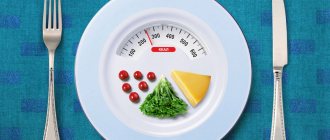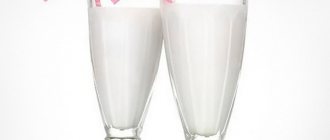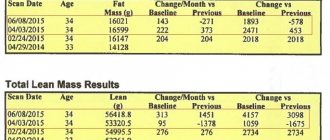Harris-Benedict formula
Most nutritionists agree that the average woman needs 2000 kcal.
However, the number of calories you can tolerate depends on your level of physical activity. Women with a sedentary lifestyle need to consume the following amount of calories:
- from 18 to 25 years old - about 2000 kcal;
- from 26 to 50 years - 1800 kcal;
- after 50 years - up to 1600 kcal.
For women leading a moderately active lifestyle, the following indicators are the norm:
- from 18 to 25 years - up to 2200 kcal;
- from 26 to 50 years - about 2000 kcal;
- after 50 years - 1800 kcal.
With high activity, women need:
- from 18 to 25 years - 2400 kcal;
- from 26 to 50 years - about 2200 kcal;
- after 50 years - up to 2000 kcal.
A woman carrying a child needs much more calories. The daily diet in this case depends on what stage of pregnancy she is at. As your pregnancy progresses, your daily food intake should increase from 2500 to 3200 calories per day. The diet of a woman who feeds a baby should be at least 3500 kcal.
There are formulas that allow you to calculate your daily calorie intake depending on gender, age, height, weight and activity level.
In 1919, the Harris-Benedict formula appeared; for modern people it is no longer accurate enough; it has an error of approximately 5%.
655.1 9.563 x weight (kg) 1.85 x height (cm) - 4.676 x age (years)
Next, the obtained result must be multiplied by the physical load coefficient:
- 1.2 - minimal or no physical activity;
- 1.375 — fitness classes 3 times a week;
- 1.4625 - fitness classes 5 times a week;
- 1.550 - intense physical activity 5 times a week;
- 1.6375 - fitness classes every day;
- 1.725 - every day intensively or twice a day;
- 1.9 - daily physical activity plus physical work;
The result is also multiplied by the activity coefficient.
10 x weight (kg) 6.25 x height (cm) - 5 x age (years) - 161
The result must also be multiplied by the activity coefficient.
Men leading a sedentary lifestyle need:
- from 18 to 30 years - about 2400 kcal;
- from 31 to 50 years - 2200 kcal;
- after 50 years - 2200-2400 kcal.
For men leading a moderately active lifestyle, the following indicators are the norm:
- from 18 to 30 years - 2600-2800 kcal;
- from 31 to 50 years - 2400-2600 kcal;
- after 50 years - 1800 kcal.
During high activity, men need to consume the following amount of calories:
- from 18 to 35 years old - about 3000 kcal;
- from 31 to 50 years - 2800-3000 kcal;
- after 50 years - 2400-2800 kcal.
66.5 13.75 x weight (kg) 5.003 x height (cm) - 6.775 x age (years)
We multiply the result obtained by the coefficient of physical activity:
- 1.2 - minimum or absence;
- 1.375 - 3 times a week;
- 1.4625 - 5 times a week;
- 1.550 – intensively 5 times a week;
- 1.6375 - every day;
- 1.725 - every day intensively or 2 times a day;
- 1.9 - daily physical work.
10 x weight (kg) 6.25 x height (cm) - 5 x age (years) 5
Here the result is also multiplied by the activity coefficient.
Although the Mifflin-San Geor formula appeared only a few years ago, it is recognized as the most accurate to date.
The daily calorie intake for women is determined by the formula: 10 x weight (kg) 6.25 x height (cm) – 5 x age (years) – 161
Now the result must be multiplied by the physical load coefficient:
- 1.2 – minimal or no physical activity
- 1.375 – fitness classes 3 times a week
- 1.4625 – fitness classes 5 times a week
- 1.550 – intense physical activity 5 times a week
- 1.6375 – fitness classes every day
- 1.725 – every day intensively or twice a day
- 1.9 – daily physical activity plus physical work

The Harris-Benedict formula was derived back in 1919 and is no longer accurate enough for modern people; it has an error of approximately 5%.
10 x weight (kg) 6.25 x height (cm) – 5 x age (years) 5
As in the calculation for women, we multiply the result by the physical activity coefficient:
- 1.2 – minimum or none
- 1.375 – 3 rub. in Week
- 1.4625 – 5 rub. in Week
- 1.550 – intensively 5 r. in Week
- 1.6375 – every day
- 1.725 – every day intensively or 2 r. in a day
- 1.9 – daily physical work
66.5 13.75 x weight (kg) 5.003 x height (cm) – 6.775 x age (years)
Don’t forget to multiply the result by the physical load factor.
To find out the daily calorie intake for weight loss (which will ensure fat loss), you need to subtract 20% from the resulting result (calculated using one of the formulas and multiplied by the activity coefficient) (for quick weight loss - 40%). However, your daily calorie intake should not be less than: weight (kg) ÷ 0.450 x 8.
Knowing your calorie intake, you can easily plan your menu for the day by using a calorie counter or food calorie table, as well as reading the energy information on food packaging. However, do not forget to adhere to the principles of proper nutrition when doing fitness.
Calculations of the daily calorie intake can also be made in kJ (relevant for products produced abroad): 1 kcal = 4.184 kJ
The calorie content of foods (energy value) is the amount of energy that is produced after digestion and complete absorption of food.
The unit of energy value is the kilojoule (kJ) or kilocalorie per 100 g of food. All foods have calories. But things like black tea and dried dill are low-calorie foods.
Calories are found in proteins, fats and carbohydrates. Proteins create energy and provide metabolism. Fats break down into acids and glycerol, turning into energy. Carbohydrates create energy for biochemical processes. Therefore, calories are needed to live, breathe, move, and maintain blood circulation.
A woman needs less calories than a man.
To calculate the calorie intake per day, they need to take into account:
- activity;
- age;
- individual characteristics;
- health.
With an inactive lifestyle, the norm per day will be:
- from 18 to 24 years old – 1950 kcal;
- from 25 to 49 years – 1750 kcal;
- over 49 years old – 1550 kcal.
At an average activity level:
- from 18 to 24 years – 2150 kcal;
- from 25 to 49 years – 1950 kcal;
- over 49 years old – 1750 kcal.
During an active life:
- from 18 to 24 years – 2350 kcal;
- from 25 to 49 years – 2150 kcal;
- over 49 years old – 1950 kcal.

When a woman is carrying a child, she is forbidden to lose weight, but eating “for two” can also be harmful. We need to remember the golden rule - “eat not for two, but for two.”
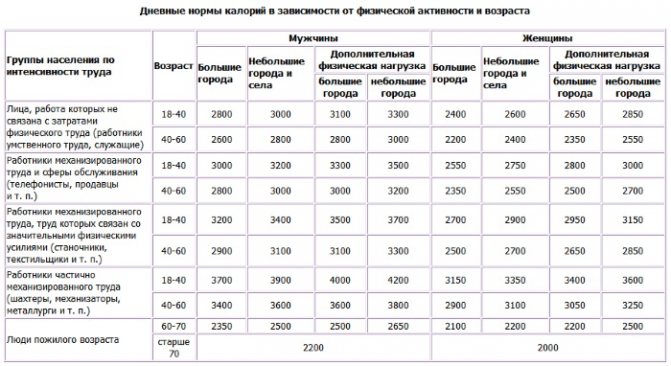
The daily calorie intake per day depends on the stage of pregnancy. As it increases, calorie intake should also increase, ranging from 2500 to 3200 - in the last weeks of pregnancy.
So, the expectant mother should consume at least 3,500 calories per day. Their third part goes to hormonal changes, to providing the fetus with everything necessary, preparing the woman for future childbirth and breastfeeding.
Don't miss the most popular article in the section:
Laser hair removal on the face and body - how it is carried out, effectiveness, before and after photos, contraindications.
The daily calorie intake per day for males is significantly higher. To correctly calculate a man’s energy needs, you need to know his lifestyle and the number of completed years.
| 25 years | 26-45 | more than 45 |
| sedentary | ||
| 2300 kcal | 1900 kcal | 1600 kcal |
| average activity | ||
| 2450-2700 kcal | 2450 kcal | 2250 kcal |
| active | ||
| 3150 kcal | 2950 – 3150 kcal | 2550 - 2950 kcal |
If a man wants to lose extra pounds, the daily calorie intake should be reduced, and if building muscle, it should be increased.
Basal metabolism is the metabolism that occurs when a person sleeps or is at rest.
Caloric intake is spent on natural physiological processes:
- breath;
- circulation;
- maintaining temperature;
- growth of new cells.
Proteins, fats and carbohydrates, when entering the body, ensure the functioning of all organs and release energy for solving everyday tasks and actions. By providing the body with the required amount of calories, a person significantly facilitates the work of the entire human mechanism. The body will respond with health, stamina, resistance to bacteria and good mood.
In 2005, the Muffin-Geor formula was introduced to calculate caloric intake per day. The equation was introduced by a team of nutritionists from America under the guidance of outstanding doctors - Muffin and San Jeor. The formula is based on calculating caloric needs to maintain current weight, taking into account activity.

OOM = (10 * kg (weight)) (6.252 * cm (height)) – (5 * age) 5;
TL = (10 * kg (weight)) (6.252 * cm (height)) – (5 * age) – 162.
2. The modified Muffin-Geor equation provides a clearer calorie figure, taking into account daily physical exertion - the resulting result of BW and TB is multiplied by physical activity.
Activity is divided into 5 stages depending on physical activity:
- 1.2 – small;
- 1.38 – weak;
- 1.55 – moderate;
- 1.73 – large;
- 1.9 – super large (includes people who physically work and train every day).
The Harris-Benedict equation has been very popular for many decades and has earned approval from experts. It was founded in 1919. Due to its simplicity, the formula is able to determine the individual calorie requirement.
- Inaccurate calorizer data
Calculation of calories actually consumed from food
Remember, to convert your weight from pounds (lb) to kilograms (kg), divide your weight in pounds by 2.2 to get your weight in kilograms.
Or, if you need pounds, then multiply your weight in kilograms by 2.2. Sedentary men and non-pregnant women: about 31 calories per kg of body weight.
Men and non-pregnant women who exercise for themselves: approximately 33-38 kcal per 1 kg of weight.
Endurance athletes: 35-50 kcal per 1 kg of weight, depending on training.
Strength athletes: 30-60 kcal per 1 kg of weight, depending on training
To lose 1 pound per week, you need to reduce your daily calorie intake by 500. A calorie deficit can be created through additional exercise, diet, or a combination of both. Remember to consider your activity level. Athletes have the proper ratio of nutrients.
Simply cutting calories drastically can show changes in weight, but losing fat and maintaining muscle is a science. To burn fat and get a beautiful, sculpted body, intense training is important. The amount of calories consumed should not be very low. This can negatively impact your workouts, slow your metabolism, or put your body into a catabolic state.
Burning fat and losing weight is a gradual process. For long-lasting results, lose no more than 1 kilogram per week through exercise and nutrition.
BMI = 75/(1.73)2 = 25
(10*75 6.25*173 – 5*28 – 161)*1.375 = 2104
2104*0.8 = 1683
IM = (173 – 110)*1.15 = 72.45 (kg)
IM = 45.5 2.2*(0.393701*173 – 60) = 63.34 (kg)
IM = 45.5 2.3*(0.393701*173 – 60) = 64.15 (kg)
IMav = (72.45 63.34 64.15)/3 = 66.6 (kg)
A calorie is a unit of energy that provides a person with vital functions. If energy is supplied in excess, it will be deposited as a reserve of fat cells. When there is not enough energy, the body spends it from adipose tissue, which leads to weight loss.
Physical or mental activity wastes energy, and in this regard, to correctly calculate the calorie content of any person’s diet, it is necessary to take into account his lifestyle:
- specific type of activity;
- Are there any trainings, what kind?
- gender and age.
Agree that the physical load coefficient of an office worker and a courier will be different. Likewise, a young and growing body requires much more energy than in adulthood. High-intensity physical activity also requires high calorie expenditure.
So, the basic principles to remember when calculating calorie intake:
- in old age, calorie consumption is significantly less;
- A woman's caloric intake level is lower than a man's energy intake;
- an active lifestyle and a high level of physical activity require consuming more calories;
- young mothers and pregnant girls should not forget that they must provide the necessary amount of energy not only for themselves, but also for their baby.
- Inaccurate calorizer data

As mentioned earlier, many programs contain recipes where the number of ingredients is written in pieces. Based on these indicators, it is impossible to know exactly the exact number of calories due to the uneven weight or fat content of the products in the finished recipe and in your version. Therefore, it is better to ignore such information and enter only your own numbers in the program or nutrition diary.
It is not recommended to try the dish during the cooking process and, in principle, before the final weighing. Otherwise, it will simply not be possible to make an accurate calculation. You can add salt to the dish in a separate plate, right?
Calorie content is the energy value of foods released in the body in the event of successful, complete absorption of the food consumed. The energy value of the product is measured in kilocalories (kcal) per 100g. product. What is energy value? Amount of carbohydrates, proteins and fats.
Every hour we spend 1 calorie to “maintain” one kilogram of body weight. Let's say your weight is 60 kg. If we multiply this figure by 24 (based on the number of hours in a day), we get 1440. However, this calculation is not correct without taking into account the level of mental and physical activity, stress, etc.
For men
For the stronger sex, the issue of daily ration norms is certainly important. And it's not just a matter of trying to stay in good physical shape. Being healthy is always fashionable. And given the fact that stress is associated with stress, modern people have become more attentive to the quality and quantity of food they eat.
Monitoring your caloric intake is the basis of proper nutrition. The difference between women's diets and men's diets is that men have an accelerated metabolic process (metabolism). Therefore, it is easier for them to lose weight than for women. This means that the diet for representatives of the stronger half of humanity should not be too meager.
So, if a man wants to maintain physical fitness at an optimal level for him, but at the same time leads a predominantly inactive lifestyle, then he should be guided by the following norm:
- if a man is from 18 to 30 years old, then he can consume 2400 kcal per day;
- at the age of 31 to 50 years, the daily norm should be 2200 kcal;
- over 50 years old, 2000 kcal will be enough.
If a man’s day proceeds at a rhythm of medium intensity, then he needs:
- at the age of 18 to 30 years, you should consume 2600-2800 kcal;
- at the age of 31 to 50 – 2400-2600 kcal;
- from 50 – 2200 – 2400 kcal per day.
Actively living men are recommended to consume:
- from 18 to 30 years old you need to consume 3000 kcal;
- at the age of 31 to 50 – 2800 – 3000 kcal;
- at the age of over 50 – 2400 – 2800 kcal per day.
For women
As a rule, the female body needs fewer calories than the male body. This is due to the fact that women gain weight faster - this is provided by nature in order to protect the female body for the purpose of full procreation. There is no point in conflicting with nature, but it is very important for any girl and woman to be in shape.
The number of calories allowed to be consumed to maintain weight depends on physical activity. If a girl or woman leads a sedentary lifestyle, then she should learn:
- the daily norm for girls from 18 to 25 years old is about 2000;
- aged 26 to 50 years – 1800 kcal;
- after 50 years – 1600 kcal.
Women and girls leading a moderately active lifestyle should consume:
- at the age of 18 to 25 – without fear for your figure, you can consume 2200 kcal per day;
- from 26 to 50 – recommended 2000 kcal;
- after 50 years the norm is 1800 kcal.
Female representatives who lead an active lifestyle require:
- 18-30 year olds – 2400 kcal;
- for 31-60 year olds it is 2200;
- after 60, 2000 per day is required.
If a woman needs to calculate calories for weight loss, then 500 kcal should be subtracted from these normal indicators and her diet should be compiled depending on the resulting amount. There is a very common belief: to effectively lose weight, the calorie intake should be reduced to 1200 per day.
However, this is only true if the woman leads a sedentary lifestyle. Because it is under this condition that weight loss will be healthy. And a sharp reduction in calorie intake, complemented by high physical activity, can provoke serious health problems: disturbances in the functioning of the cardiovascular system (symptoms - dizziness, nausea, weakness), disruptions in the menstrual cycle (up to amenorrhea), slowdown of metabolism and weakening of the immune system.
We suggest you read: Antibiotic Cephalexin - instructions for use, reviews
The most common 2 formulas for calculating calorie intake are:
- Harris-Benedict formula
- Mifflin-San Geor formula
The first was proposed in 1919 (a modified version is now used). For a long time she was the only one. Now the Mifflin-San Geor formula is becoming more popular. It was developed quite recently, and nutritionists prefer to use it because... it is easier for calculations. On the jelly itself, the results of both formulas are very close.
Below I will give calculations using both formulas with examples. You can decide for yourself which formula suits you best.
First, measure your height and weight. Also determine what kind of lifestyle you lead. This information is needed to select the physical activity ratio:
- if you do not play sports and spend most of the day passively, then your coefficient is 1.2;
- when playing sports 3 times a week – 1.375;
- at 5 times a week – 1.4625;
- when you are engaged in physical labor and train intensively – 1.55;
- if your sports activities are daily, then your coefficient is 1.6375;
- your daily classes are intensive or not once a day – 1.725;
- and, if you also work physically, then the coefficient is 1.9.
(88.36 13.4 * 88 4.8 * 184 – 5.7 * 40) * 1.4625 = 2812 kcal
Is the quality of calories consumed important?
If everything gradually becomes clear about the amount of energy required, then the situation with the quality of nutrients is somewhat more complicated.
A balanced diet should be structured as follows:
- proteins – 22-35%;
- fats – 22-35%;
- carbohydrates – 30-50%.
By giving preference mainly to fatty foods and reducing the level of protein and carbohydrate foods, you can expect a good gain on the scale in the near future.
If you get energy mainly from carbohydrates, then there will be a lot of it. If there is not enough protein and fat in the diet, you may notice unpleasant symptoms:
- anemia:
- weakness and drowsiness;
- degradation of the level of immunity, etc.
It is important to get balanced energy from all types of macronutrients (protein, carbohydrates and fats) to properly support your body.
All food has a certain energy value. In accordance with age characteristics, gender and load level, the daily norm will vary from 1500 to 3000 kcal. The indicators will be different for women and men; children need energy not only for studying and playing, but also for growth. Further, with age, the need for calories decreases.
The number of calories for a woman is calculated according to her activity level, health status and goal, whether it is weight loss or weight gain. For those who play sports, it is possible to allow themselves to eat a little more, and if you tend to be overweight, it is recommended to take into account everything you eat.
Very often, women, due to their maximalism and strong desire to lose weight, go on a strict diet, severely limiting themselves in everything and starving. The body does not receive important macroelements, vitamins and minerals and begins to lose ground: the state of health becomes systematically poor and is accompanied by dizziness, and there is no mood.
Every female representative is very familiar with the phenomenon of PMS: at this moment the body desperately needs the hormone of happiness (serotonin), so whole bars of chocolate are used, which are snacked on chocolate candies and eaten with flour products. Such monthly momentary weakness, of course, will help to lift your mood for a short time, and will also be a “life preserver” on your sides and stomach, which you will then have to fight with renewed vigor.
First of all, counting calories is necessary to form proper eating habits. If you eat right and follow a regimen, monitor portion sizes and the balance of macronutrients, then you can stay slim all year long, maintaining your health and nerves.
General concept of calories
Before we talk about how to correctly calculate your daily calorie intake, you should dwell on the basic concepts. A calorie is a generally accepted unit of measurement of energy that the body spends on various processes during its life. A person receives calories in the process of digesting food through the gastrointestinal tract.
As noted above, the amount of energy expenditure is different for each person and directly depends on the degree of daily physical and intellectual activity, the amount of food consumed, weight and health status.

If the body received a large amount of calories along with food and was unable to spend them during the day, then the excess settles in the body in the form of fat deposits. Thus, an increased daily calorie intake leads to weight gain. But when the body does not receive the portion of calories it needs during the day, fat reserves are burned. Thus, weight loss is observed. However, it is worth remembering: if there is no reserve of fat deposits and a person is in good physical shape, a lack of calories leads to severe depletion of the body, which is fraught with a deterioration in the general physical condition and the development of various pathologies, such as dysfunction of the vascular, nervous and digestive systems.
How to count calories in foods
To do this, you will need two main tools - a kitchen scale and tables with calorie content of foods. The device can be found in any hardware store, and the necessary tables are always located on the website. However, this is not enough to achieve the goal.
To build a high-quality form, the composition of the food consumed is extremely important. You can get your entire calorie intake from sweets, but everyone understands perfectly well that the quality of the body will not be the best. In this regard, the body must be provided with the required amount of calories, maintaining a balance in nutrients, namely: proteins, fats and carbohydrates.
Best Calorie Calculator Apps
With the modern rhythm of life, it is often extremely difficult for people to independently calculate the calorie content of each portion of food eaten. As already noted, phone applications are the most accessible, optimal and fastest way to find out how many calories are in food. And also the advantage of many of these applications is that they can find out how many calories were burned during the day and help create a suitable list of products and dishes.

The best calorie counting apps for smartphones are:
- YAZIO. The information base of this application contains data on a huge number of products and ready-made dishes. The convenience and uniqueness of the program also lies in the fact that in YAZIO you can find recipes that you can use to prepare a dish with the required calorie content.
- "Calorie." The application will help anyone not only control their daily calorie intake, but will also tell you how many calories were burned.
- Lifesum. This application will help you not only find out information about the calorie content of food, but also create the right diet for a specific purpose. This program is a good helper, especially for those people who have decided to lose weight.
- FatSecret. In this application, any user will be able to find all the necessary information about food, from calorie content to its nutritional value.
The importance of proteins, fats and carbohydrates when counting calories
Doctors and nutritionists recommend keeping a notebook when counting calories. In it, you need to plan your meals for each day, taking into account the recommended consumption of dietary supplements, as well as calculate excessively accumulated reserves, or the desired kilograms. Proper nutrition should be accompanied by a psychological attitude towards the benefits and benefits received.
Nutritionists support the idea that a person should not limit himself to any foods. The whole point of dieting and weight gain should be based on calorie counting. You should not start a diet if you have any illnesses, stress, or difficult periods of life.
Recommendations for organizing the menu:
- daily food intake should be divided into 4 times, with breaks between them of 3 to 4 hours;
- reduce the consumption of smoked meats and marinades;
- The final meal should be 2.5 hours before bedtime (preferably earlier);
- norm for the consumption of simple carbohydrates (pasta, confectionery);
- the distribution of calories should be as follows: breakfast - 30%, light snack - 10%, lunch - 40%, dinner - 20%, 5-10% - additional dinner;
- half an hour before meals, drink a glass of water.
Knowing the daily calorie intake per day, it is not difficult to adjust your diet and begin the path to achieving your desired goal - weight gain or loss. Counting the calorie content of foods will help you look at nutrition differently and balance your life.
Article design: Vladimir the Great
When creating a balanced diet, you need to remember that it is extremely important to consume sufficient amounts of proteins, fats and carbohydrates every day. Food also supplies a large amount of vitamins and minerals, which directly affects the condition of the skin, hair, nails, as well as the condition of the body as a whole and the process of losing weight or gaining weight.
At the stage of losing weight, the amount of protein should be increased, preference should be given to complex carbohydrates, and fats should be obtained from plant sources. Thus, the percentage of BZHU changes when losing weight.
When gaining muscle mass, despite the increase in the percentage of carbohydrates, it is better to give preference to slow-acting macronutrients. Otherwise, there is a risk of gaining fat rather than working on improving the quality and quantity of muscle fibers, forming the desired shape.
Calorie intake during pregnancy
Expectant mothers should strictly remember that they should not lose weight while pregnant. The daily diet of a pregnant woman is directly related to the term: the longer it is, the higher the need for energy obtained from food.
The menu of a nursing woman should also be rich and varied and, as a rule, keep around 3500 kcal. Due to the fact that breast milk consists of 87% water, you should not forget about maintaining water balance (2-3 liters per day).
Within 6 weeks after giving birth, it is not recommended to start fighting the gained kilograms. This is due to the need for restoration and rest of the body, as well as to provide the child with all the substances necessary for development that come with breast milk. As soon as the baby is weaned, you can begin to strictly observe the required caloric intake.
Tricks to “fit into the norm”
To get your daily calorie intake for weight loss, you can, of course, eat a piece of cake and a couple of chocolate bars, and suffer from hunger the rest of the day. But there is another option: eat foods with medium or low calorie content in order to feel full for a long time and provide the body with all the necessary nutrients.
This will also help make the weight loss process as comfortable as possible. In order not to go on a diet and always stay slim, experts recommend following a number of rules:
- Remove fatty foods from your diet. To do this, simply find an alternative. For example, instead of pork, eat lean beef or steam the cutlets not in oil, but in steam. Your satiety level will remain the same, but the number of calories consumed will decrease significantly.
- No sugar. Cravings for sweets can be muffled with a reasonable amount of honey, dried fruits and dark chocolate.
- Chewing food thoroughly. Slowing down the process of food entering the digestive tract can fill the body faster and, as a result, reduce portions. Fractional meals. Dividing portions into 5-6 meals will help reduce stomach volume, which will reduce the risk of overeating.
- Visual deception. If you put portions on small plates and use dessert spoons, the brain will think that since the plate is completely full, then the stomach will eventually be full.
- Including fiber in your diet. It quickly saturates and is not absorbed by the body. Present in vegetables, fruits, legumes and whole grains. Learn the beneficial properties of fiber and write down a list of foods high in fiber.
Effect of age on calorie intake
It is extremely important to remember that one of the key factors in calculating your daily calorie intake is age. This fact is due to the fact that energy consumption at different ages will also differ. Young people, especially teenagers, need more energy as the body undergoes various physiological changes. Older people need significantly less energy, since physical activity decreases significantly with age.
Knowing and being able to use calories correctly, a person is able to regulate and correct his health and weight. For example, calculating the daily calorie intake for weight loss will allow you to get rid of extra pounds even without unnecessary sports training. And also, on the contrary, gain weight in case of exhaustion.
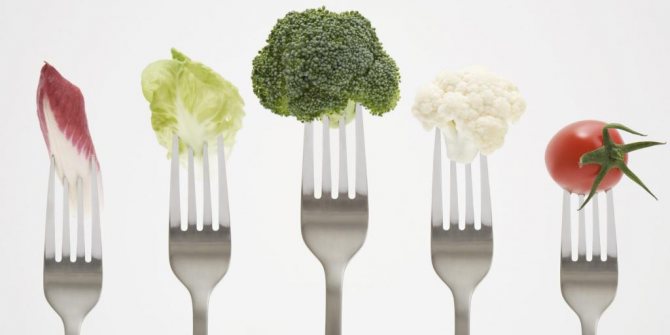
Useful and harmful calories
A calorie is a unit of measurement of heat, energy. They are usually divided into useful and harmful, since some of them, when entering the body, are beneficial, while others are sent to the reserve.
Fast carbohydrates - in sugar, chocolate and confectionery. In the first case, the body will receive a lot of energy, microelements, vitamins and amino acids. These are healthy calories.
When simple carbohydrates enter the body, it will receive a significant dose of calories with virtually no useful elements, plus they will go into the reserves of adipose tissue. Such calories are called harmful.
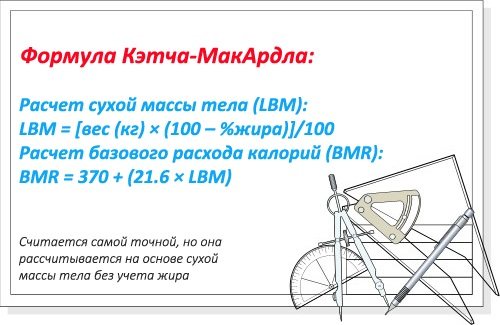
Healthy calories come from natural foods, while unhealthy calories come from processed ingredients enhanced with flavoring additives.
Lower limits of normal
The calorie corridor is the lower and upper limit of calorie intake per day for weight loss or maintenance. Knowing your individual metabolic rate (basal metabolism) will help you find out the lower limit. There are many equations for calculating your metabolic rate. You need to add 200 to the result of the lower limit of the norm, and you get the upper limit.
To lose weight, you need to calculate your individual calorie range and start reducing it. Doctors advise not to eat less than the lower limit of normal - 900-1000 calories per day. If someone who is losing weight eats less, they will constantly feel hungry and be stressed. At the same time, weight loss will stop, as the body will leave energy in reserve.

